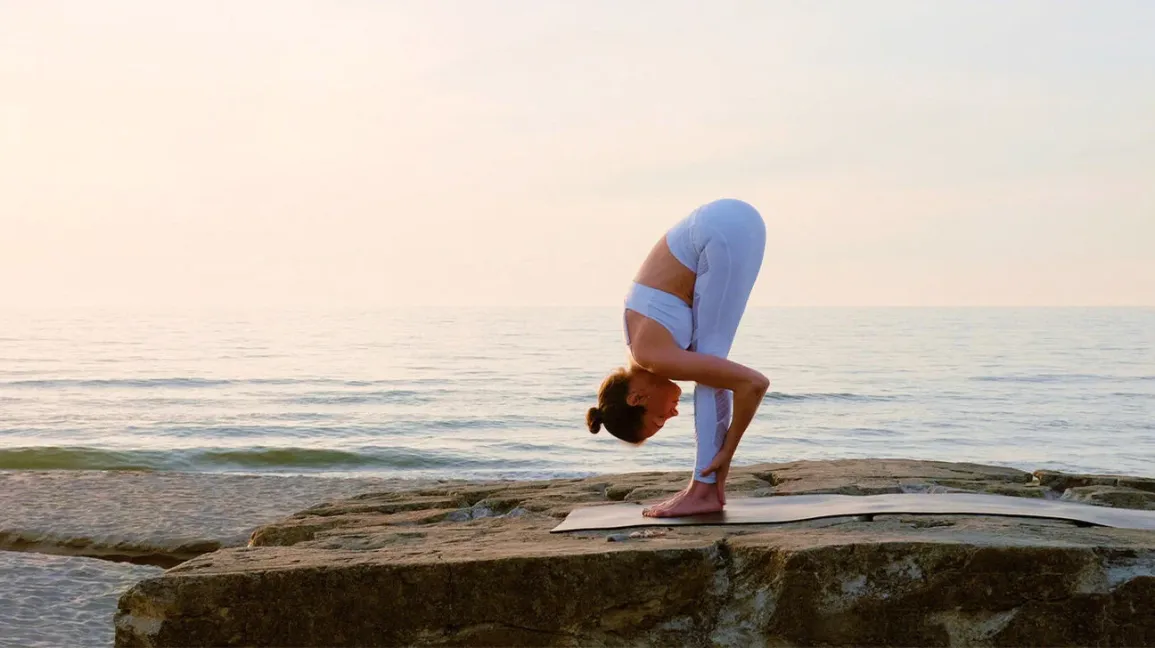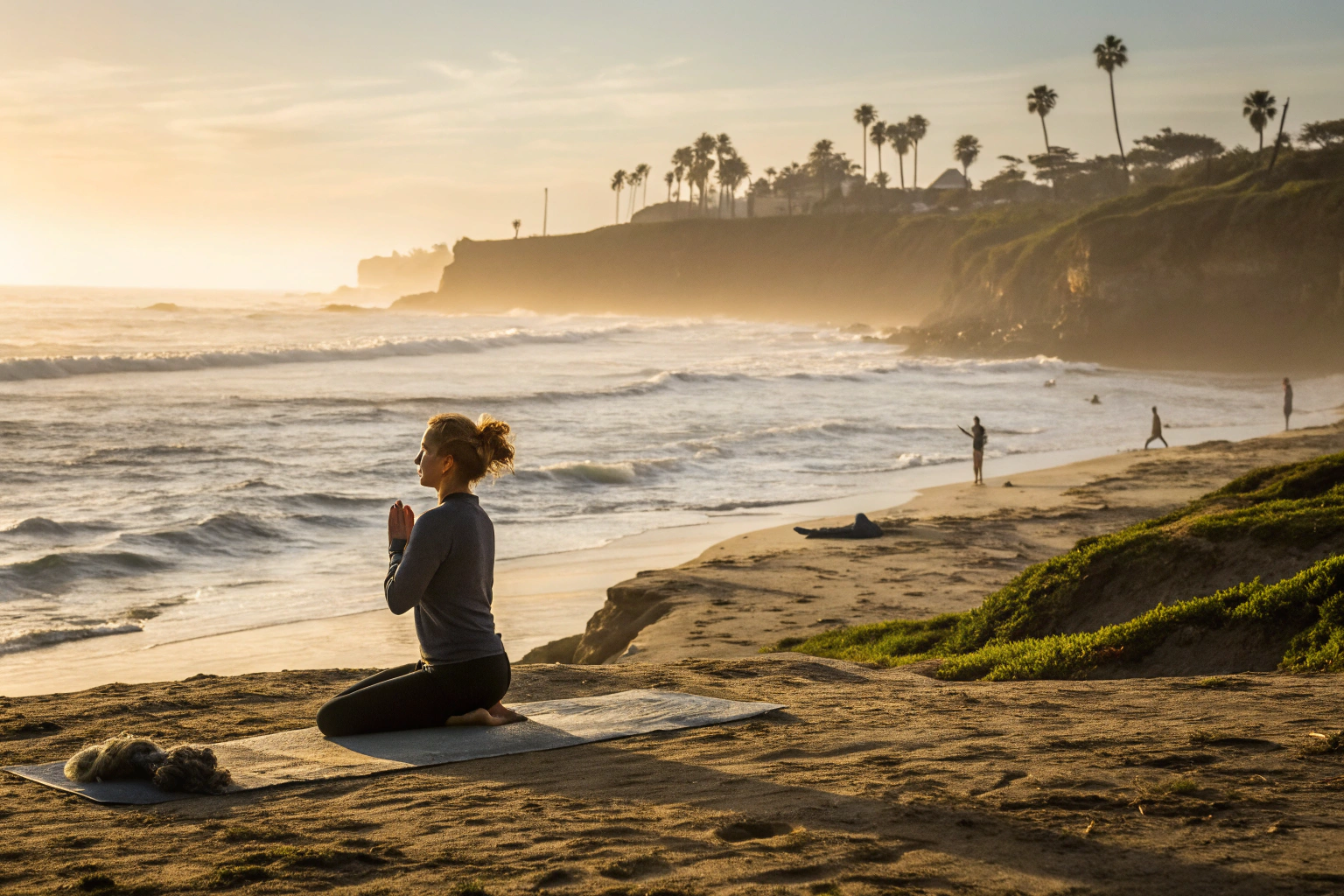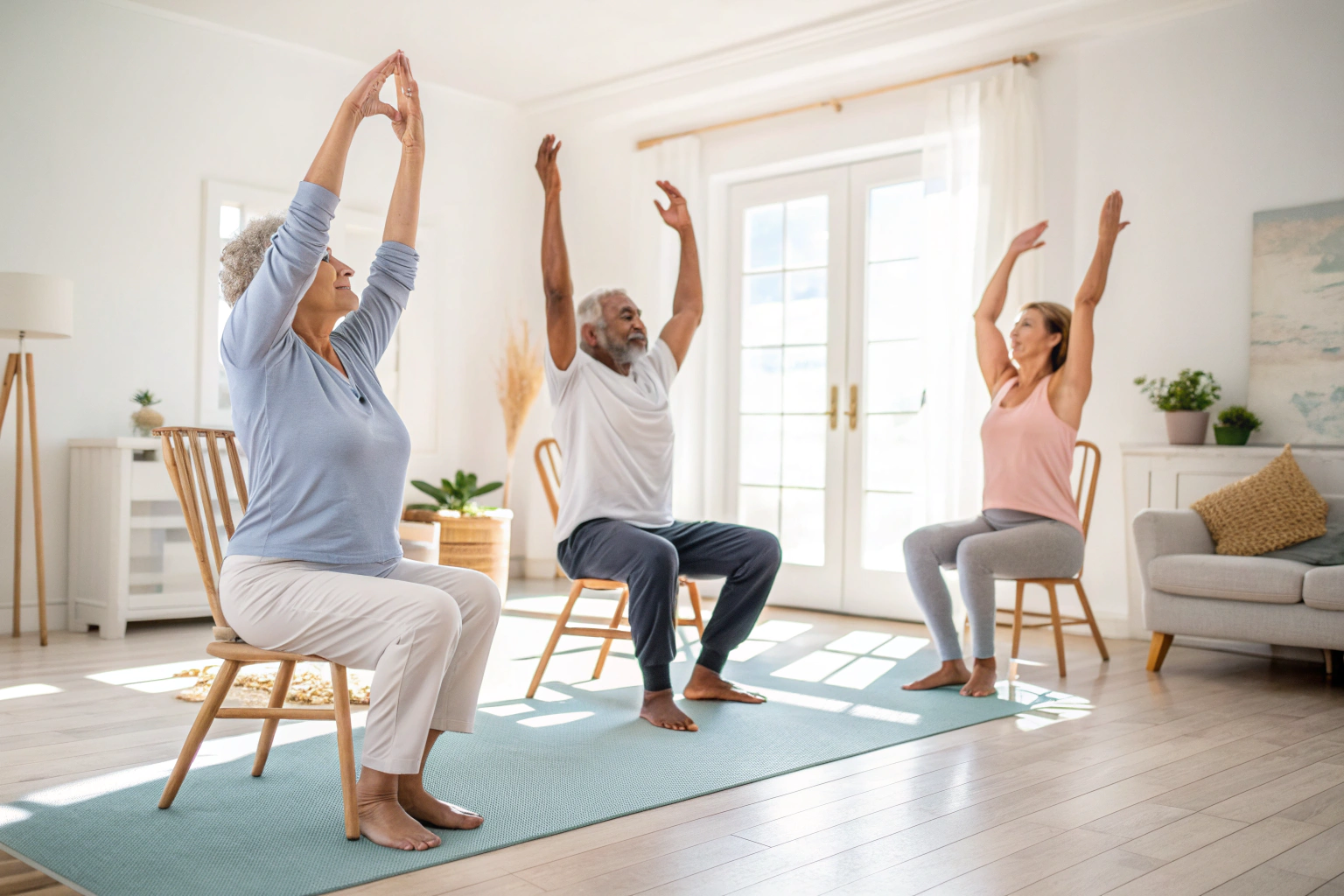Tantric yoga is an ancient spiritual practice that integrates breath, movement, and awareness to awaken energy and deepen connection with ourselves and others. Unlike common misconceptions that reduce tantra to merely sexual practices, authentic tantric yoga is a comprehensive path toward spiritual enlightenment, embracing the wholeness of human experience—body, mind, and spirit. Tantra, as a philosophical tradition, encompasses various schools of thought that have evolved over millennia.
During my decade-long journey with tantric yoga, I’ve discovered its transformative potential goes far beyond physical postures. This practice has helped me develop greater self-awareness, emotional balance, and a profound sense of inner peace that permeates all aspects of my life. As Dr. Christopher Wallis, a renowned tantric scholar, notes: “Tantra is a complete spiritual path that includes all aspects of life as potential vehicles for awakening and liberation.”
Key Takeaways:
- Authentic tantric yoga focuses on energy awakening and spiritual connection
- Essential solo and partner poses for practitioners at all levels
- Techniques for integrating breath, movement, and awareness
- Practical guidance for creating a consistent tantric practice
Understanding Authentic Tantric Yoga: My Experience Beyond the Myths
When I first encountered tantric yoga, I carried the same misconceptions that many do—that it was primarily focused on sexuality. My understanding transformed dramatically when I met my teacher, who patiently explained that authentic tantra is a spiritual technology for awakening consciousness and recognizing the divine in everyday experience.
According to Sally Kempton, a respected meditation teacher and tantric practitioner: “Tantra sees the entire universe as a manifestation of divine consciousness… Rather than transcending or renouncing the world, tantra invites us to recognize that everything we encounter is an expression of the divine.” This perspective aligns with modern interpretations of tantric philosophy that emphasize integration rather than renunciation.
Unlike more physical yoga styles I had practiced previously, tantric yoga emphasizes the subtle energy body and consciousness. While hatha yoga primarily focuses on physical postures and alignment, tantric yoga incorporates these elements as gateways to deeper energy awareness and spiritual transformation.
Key Principles of Authentic Tantric Yoga:
- Non-duality: Recognizing the interconnectedness of all existence
- Energy awareness: Working consciously with subtle energies in the body
- Divine embodiment: Honoring the body as a temple of consciousness
- Ritual and sacredness: Approaching practice with reverence and intention
- Integration: Bringing spiritual awareness into all aspects of life
The Sacred Connection Between Breath, Movement, and Energy
In tantric yoga, breath (prana) serves as the bridge between body and consciousness. I discovered that by synchronizing conscious breathing with specific movements, I could direct energy through my body in powerful ways. During one particularly profound practice session, I experienced what felt like electricity moving up my spine as I combined deep, rhythmic breathing with a simple spinal twist.
“The breath is the vehicle of prana, the life force that animates all living beings. In tantric practice, we learn to consciously direct this life force through specific channels to awaken dormant energies and expand consciousness.”
— Ananda Sarita, Tantra Yoga: Definition, Techniques, Poses, & Health Benefits, July 2024
Source link
Tantric breathing techniques differ from regular breathing by incorporating specific rhythms, retentions, and visualizations. For example, during the practice of “alternate nostril breathing” (Nadi Shodhana), I visualize energy flowing through specific channels while mentally repeating mantras. This combination creates a multidimensional experience that regular pranayama often doesn’t achieve.
The Components of Tantra in My Practice
My tantric practice integrates several key components that work together to create a comprehensive approach to spiritual development:
| Component | Description | My Experience |
|---|---|---|
| Mantra | Sacred sound vibrations that attune consciousness | Using the bija (seed) mantras connected to each chakra has significantly deepened my meditation |
| Mudra | Hand gestures that direct energy flow | Yoni mudra helps me cultivate receptive energy; Prana mudra increases my vitality |
| Yantra | Sacred geometric patterns for focused meditation | Meditating on the Sri Yantra has enhanced my concentration and visual awareness |
| Bandha | Energy locks that direct prana | Mula bandha (root lock) grounds my energy and strengthens my practice |
| Ritual | Sacred actions that create intentional space | Opening rituals help me transition from everyday consciousness into sacred awareness |
Essential Solo Tantric Yoga Poses from My Daily Practice
The following solo tantric yoga poses form the foundation of my daily practice. While they may look similar to poses from other yoga traditions, the tantric approach emphasizes internal energy awareness, breath, and consciousness rather than just physical alignment.
Seated Tantric Poses for Meditation and Energy Awakening
- Sukhasana (Easy Pose) with Tantric Variations
Sitting cross-legged with spine erect, I place my hands in Gyan mudra (thumb and index finger touching) on my knees. While maintaining the position, I focus on drawing energy up from the earth through my root chakra while visualizing a golden light filling my body with each inhalation.
- Siddhasana (Accomplished Pose)
This powerful meditation pose involves placing one heel against the perineum (for men) or against the labia (for women), which stimulates the root chakra and helps contain and direct sexual energy upward. I combine this with visualizing a red lotus at the base of my spine, expanding with each breath.
- Padmasana (Lotus Pose) with Tantric Breathing
When practicing lotus pose tantricly, I focus on the central channel (sushumna nadi) running from the base of my spine to the crown of my head. With each inhalation, I visualize drawing energy up this channel, and with each exhalation, I visualize this energy radiating outward through my entire being.
As noted by tantric scholar David Frawley: “The purpose of asana practice in Tantra is not just physical fitness but to create the proper condition for the awakening of the Kundalini energy and to hold that energy once awakened.”
Standing Tantric Poses for Strength and Grounding
Standing poses in tantric yoga provide a unique opportunity to experience the balance of stability and freedom, grounding and elevation—embodying the principle of polarities that is central to tantric philosophy.
- Tadasana (Mountain Pose) with Energy Awareness – Standing tall with feet hip-width apart, I visualize roots extending from my feet deep into the earth while simultaneously feeling a lifting energy through my central channel.
- Virabhadrasana II (Warrior II) with Polarity Consciousness – In this pose, I experience the masculine (forward arm/gaze) and feminine (receptive back arm) energies simultaneously in my body, embodying the tantric principle of unifying opposites.
- Trikonasana (Triangle Pose) with Chakra Activation – As I extend into triangle pose, I focus on the flow of energy between the heart and solar plexus chakras, experiencing how they balance love and personal power.
Fire Essence Practices I Use to Build Inner Power
Tantric fire practices (agni sadhana) build internal heat and transform energy patterns. These techniques have been particularly powerful in helping me develop confidence and overcome limiting beliefs.
One of my core practices is Agni Sara Kriya, which involves drawing the navel toward the spine on an exhale, holding the breath out while pumping the abdomen in and out rhythmically, then inhaling to release. This practice generates tremendous heat and energy in the solar plexus, which in tantric understanding is the seat of personal power and transformation.
Dr. Lorin Roche, translator of the Vijnana Bhairava Tantra, explains: “Tantra teaches techniques for befriending the raw power of emotions and sensations rather than trying to transcend them. Through these practices, we transform potentially destructive energies into fuel for awakening.”
Partner Tantric Yoga Poses for Deepening Connection
Partner tantric yoga creates a sacred container for sharing energy and deepening connection. Contrary to popular misconceptions, these practices are primarily about energy awareness and spiritual connection rather than sexuality, though they can enhance intimacy between romantic partners.
The key to successful partner practice lies in clear communication, consent, and mutual respect. Before beginning any partner practice, I always establish clear boundaries and intentions with my practice partner, ensuring we’re aligned in our approach.
Beginner Partner Poses I Recommend for Building Trust
- Back-to-Back Breathing: Sitting back-to-back with straight spines, partners synchronize their breath, feeling the expansion and contraction of each other’s bodies. This simple practice builds awareness of shared energy.
- Palm-to-Palm Connection: Sitting facing each other with palms touching, partners close their eyes and focus on the energy exchange between their hands, noticing sensations of warmth, tingling, or pulsing.
- Eye Gazing (Trataka): Partners sit comfortably facing each other and maintain soft eye contact for 5-10 minutes, allowing themselves to be fully seen while witnessing the other without judgment.
According to tantric teacher Sofia Sundari: “Partner practices in tantra are designed to help us recognize the divine in another person and therefore in ourselves. They create a mirror in which we can see our own true nature reflected.”
Intermediate Partner Tantric Poses for Energy Exchange
As trust and comfort grow between partners, more advanced poses allow for deeper energy exchange:
- Yab-Yum (Seated Embrace)
This classical tantric position involves one partner sitting in lotus or simple cross-legged position while the other sits on their lap, facing them, with legs wrapped around their waist. Partners synchronize their breathing while maintaining eye contact or resting foreheads together. This position balances masculine and feminine energies and stimulates the heart chakra.
“This seated, embracing posture represents the sacred union of the masculine (upright) and feminine (open) energies. It cultivates polarity awareness and chakra integration.”
— Ananda Sarita, Tantra Yoga: Definition, Techniques, Poses, & Health Benefits, July 2024
Source link - Double Boat Pose (Partner Navasana)
Partners sit facing each other with knees bent, feet flat on the floor. Gradually, they lift their feet and bring the soles of their feet together, creating a balanced boat shape between them. This pose builds trust, core strength, and energetic balance.
- Flying Bow Pose
One partner lies on their back with knees bent toward chest; the other stands at their feet. The lying partner places their feet on the standing partner’s hip creases, who then leans forward to grasp their hands. As the bottom partner straightens their legs, the top partner “flies,” balancing on their partner’s feet. This pose develops trust and playfulness while opening the heart chakra.
Creating Your Tantric Yoga Practice: Lessons from My Daily Routine
Establishing a consistent tantric yoga practice requires intention, commitment, and a sacred approach. Here’s how I structure my daily practice:
My 20-Minute Daily Tantric Practice for Beginners
- Sacred Space Creation (2 minutes): Light a candle, burn incense, and set an intention for the practice
- Conscious Breathing (3 minutes): Simple awareness of breath, gradually deepening inhales and exhales
- Energy Awakening Movement (5 minutes): Gentle spinal movements coordinated with breath
- Seated Pose with Mudra (5 minutes): Simple cross-legged position with hands in heart mudra
- Chakra Visualization (3 minutes): Bringing awareness to each energy center
- Integration (2 minutes): Lying in savasana, absorbing the effects of the practice
Kamini Desai, PhD, director of the Amrit Yoga Institute, emphasizes: “Consistency matters more than duration. A 15-minute daily practice will yield better results than a 2-hour practice once a week.”
Creating a Tantra Space for My Practice
The environment we practice in significantly impacts our experience. I’ve found that creating a dedicated space—even if it’s just a corner of a room—helps deepen my practice by providing visual and energetic cues that support the transition from everyday awareness to sacred presence.
Essential Elements for a Tantric Practice Space:
- Altar or focal point: Contains meaningful objects that represent your intentions
- Comfortable seat: Cushion, blanket, or meditation bench
- Natural elements: Crystals, plants, or flowers
- Light source: Candles or soft lighting
- Sacred scent: Incense, essential oils, or herbal bundles
Transformative Benefits I’ve Experienced Through Tantric Yoga
Consistent tantric yoga practice has transformed many aspects of my life in ways I couldn’t have anticipated when I began this journey:
| Benefit Category | Specific Improvements |
|---|---|
| Physical |
|
| Emotional |
|
| Mental |
|
| Spiritual |
|
| Relational |
|
Research increasingly supports many of these experiential benefits. A 2017 study published in the International Journal of Yoga Therapy found that tantric yoga practices significantly reduced stress hormones and improved markers of emotional wellbeing compared to control groups.
Enhanced Mindfulness and Awareness in My Daily Life
Perhaps the most profound benefit I’ve experienced from tantric yoga is the development of present-moment awareness that extends far beyond my practice sessions. Ordinary activities—preparing food, walking outdoors, conversations with friends—have become opportunities for mindful presence and connection.
One powerful example occurred during a particularly stressful work deadline. Rather than getting caught in my usual pattern of anxiety and rushed work, I noticed my stress response arising and applied tantric breathing techniques. This simple shift allowed me to remain centered and complete the project with greater ease and creativity than I had previously thought possible.
Common Challenges in My Tantric Yoga Journey and How I Overcame Them
My tantric yoga journey hasn’t been without obstacles. Here are some challenges I’ve faced and the solutions that helped me overcome them:
- Challenge: Misconceptions and judgments from others
Solution: I became clear about my own understanding of authentic tantra and learned to articulate it confidently when questions arose. I also connected with a community of like-minded practitioners who shared my approach. - Challenge: Inconsistency in practice
Solution: I started with just 10 minutes daily, making it easier to maintain consistency. I also connected my practice to an existing habit (morning coffee) as an anchor. - Challenge: Difficulty with subtle energy awareness
Solution: I began with more physical practices that produced noticeable sensations, gradually developing sensitivity to subtler energies over time. - Challenge: Finding authentic teachers
Solution: I researched teachers’ lineages and training, read their published works, and attended introductory sessions before committing to longer programs.
As Tantric scholar Douglas Brooks reminds us: “The challenges we face in practice are not obstacles to the path—they are the path itself. Each difficulty presents an opportunity to apply tantric principles of awareness and transformation.”
Conclusion: Integrating Tantric Yoga Poses Into Your Spiritual Journey
Tantric yoga offers a profound path of transformation that integrates body, energy, and consciousness. Throughout my journey, this practice has continually revealed new layers of awareness and possibility, teaching me that spiritual growth doesn’t require rejecting the physical world but rather embracing it with conscious awareness.
Whether you’re drawn to the solo practices for personal development or partner practices for deepening connection, authentic tantric yoga provides tools for awakening energy and expanding consciousness. Begin where you are, with what you have, and allow your practice to evolve organically as your awareness grows.
As I continue my tantric yoga journey, I’m constantly reminded of the wisdom shared by my first teacher: “The practices themselves are not the goal—they are vehicles that carry us toward recognition of our true nature. The real tantra happens in how we live our lives.”
Recommended Resources for Further Exploration:
- Books: “Tantra Illuminated” by Christopher Wallis, “Awakening Shakti” by Sally Kempton
- Online Learning: Embodied Philosophy (embodiedphilosophy.org), The Tantric Studies program at yogainternational.com
- Communities: The Tantric Yoga Collective, International Association of Yoga Therapists



